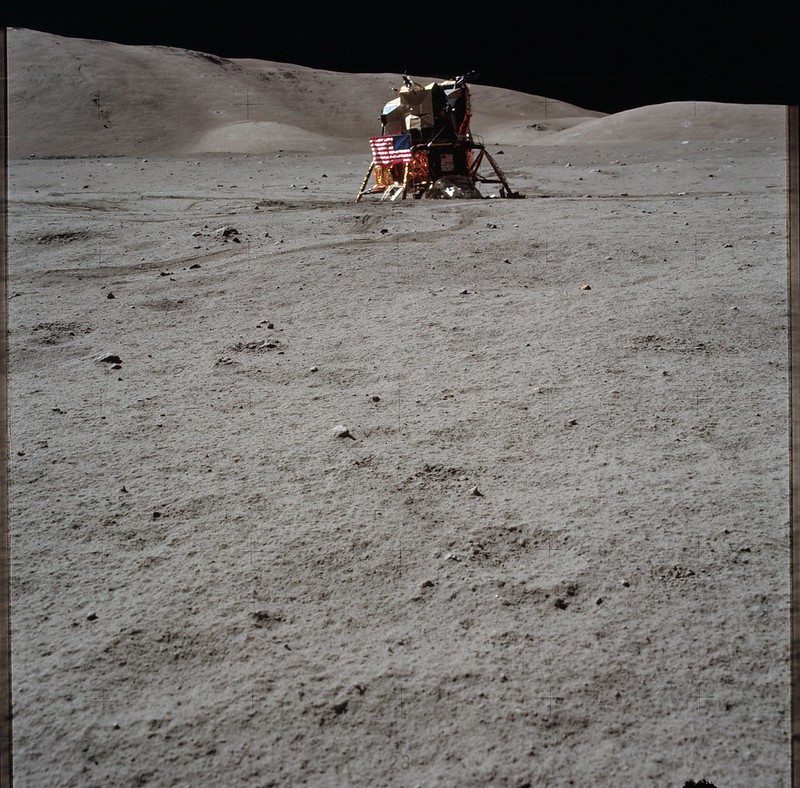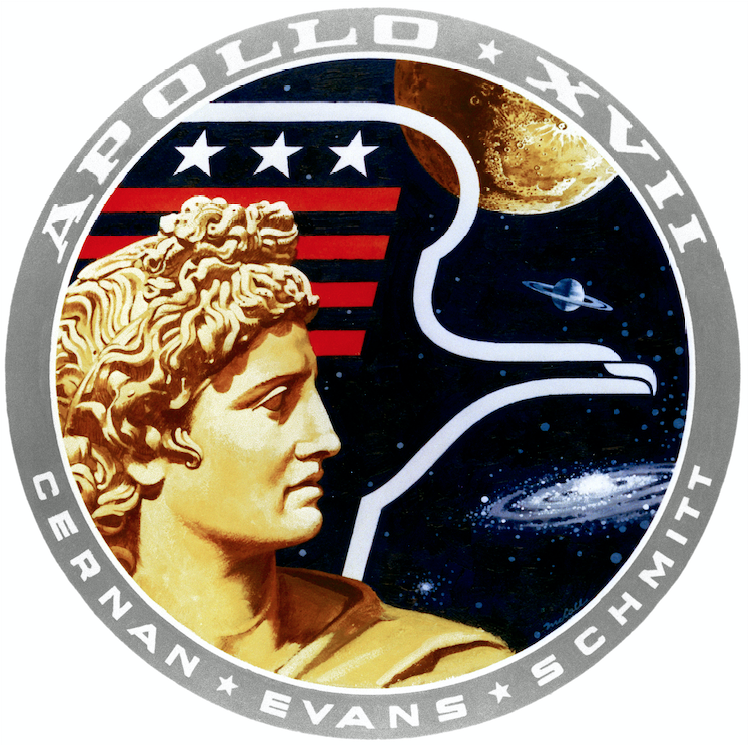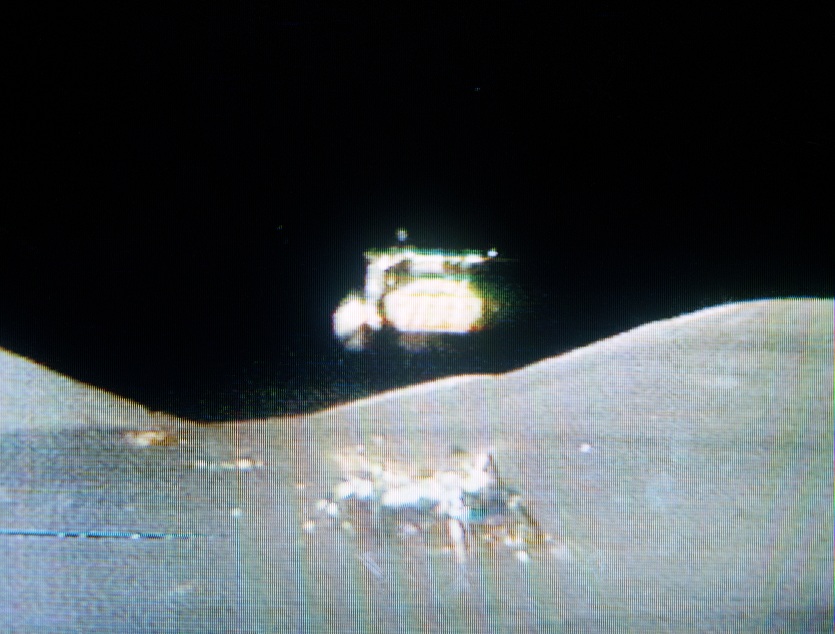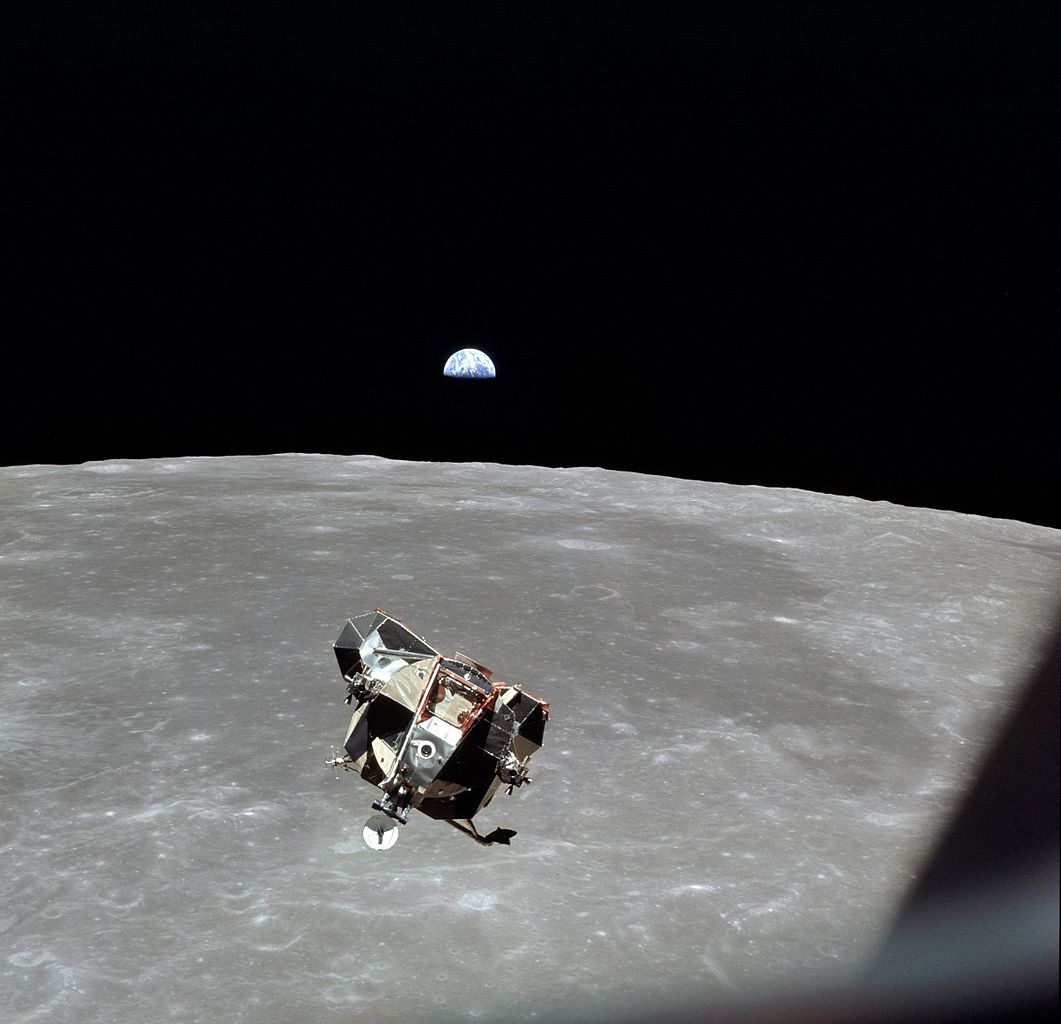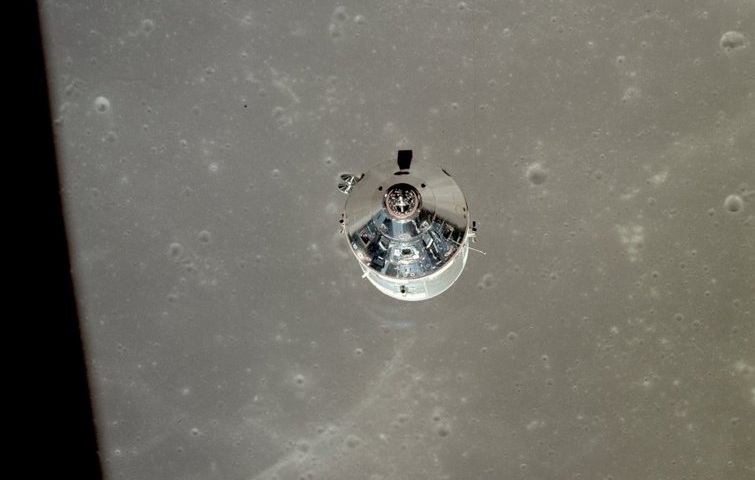
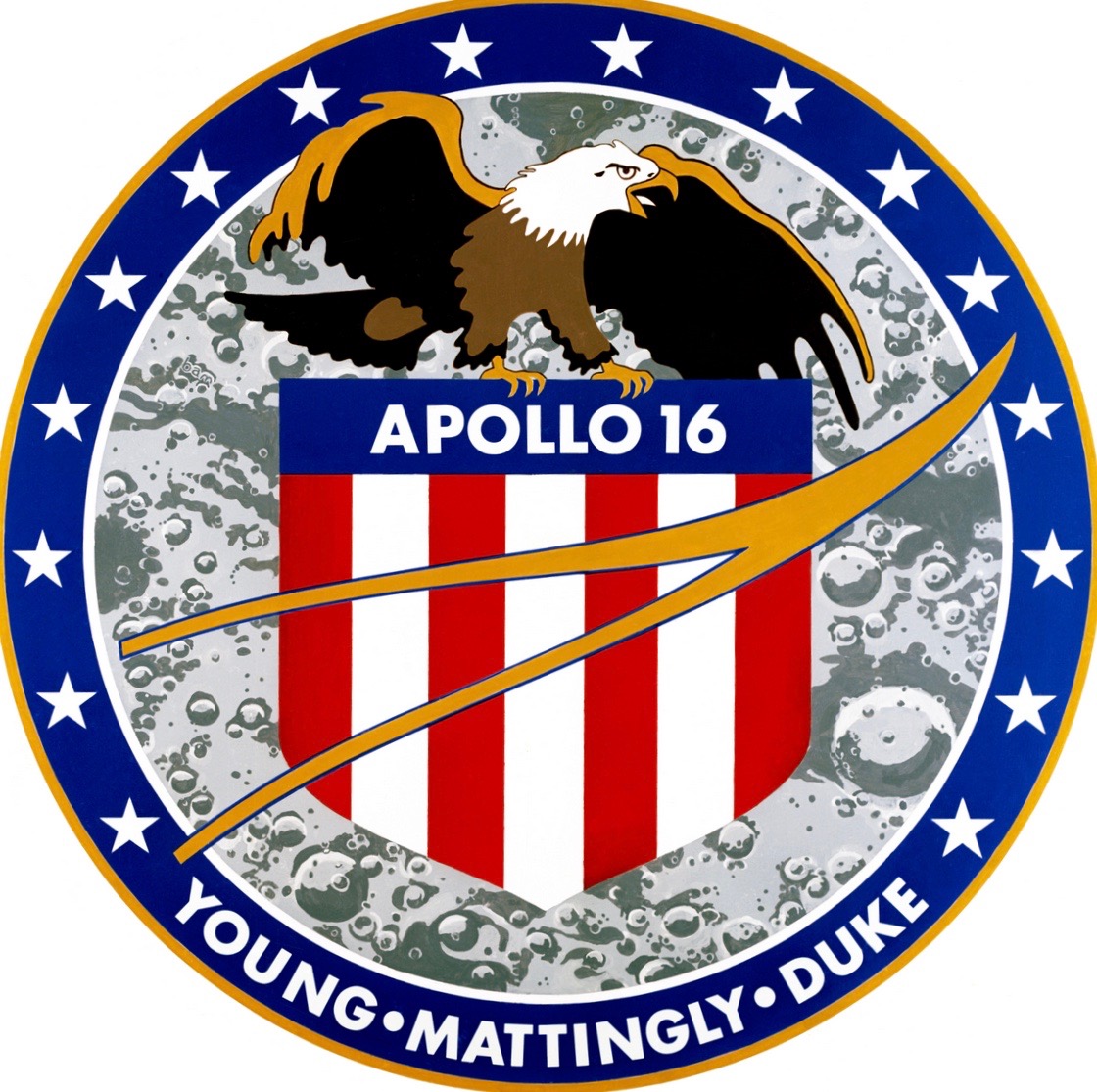
Technical problems delayed Orion‘s descent for three orbits. Lieutenant Commander Thomas K. (Ken) Mattingly II, U.S.N., the Command Module Pilot, remained in lunar orbit aboard Casper (CSM-113).
As they neared the surface they started to see dust blowing at about 80 feet (24 meters). The lunar module hovered briefly before continued downward.
104:29:22 Duke: Okay, 2 down. Stand by for contact. Come on, let her down. You leveled off. (Pause) Let her on down. Okay, 7. . . 6 percent [fuel remaining]. Plenty fat.
104:29:36 Duke: Contact! Stop. (Pause while they drop to the surface) Boom.
During a debriefing, John Young said,
“When we got the Contact light, I counted ‘one-potato’ and shut the engine down. The thing fell out of the sky the last three feet. I know it did. I don’t know how much we were coming down, maybe a foot a second.” ¹
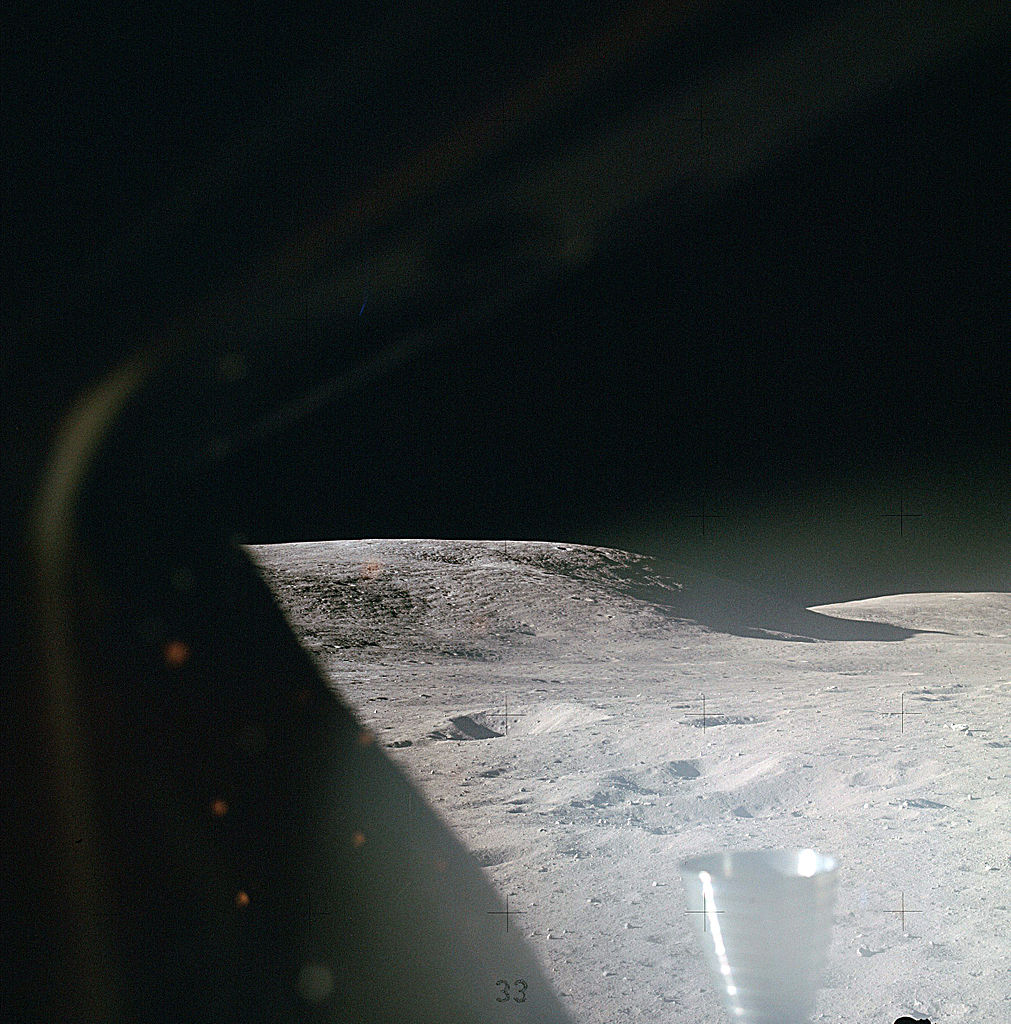
Young and Duke remained on the surface for 2 days, 23 hours, 2 minutes, 12 seconds. ² During that time, they performed three EVAs totaling 20 hours, 14 minutes, 14 seconds. ³ They drove their Lunar Roving Vehicle 16.6 miles (26.7 kilometers).
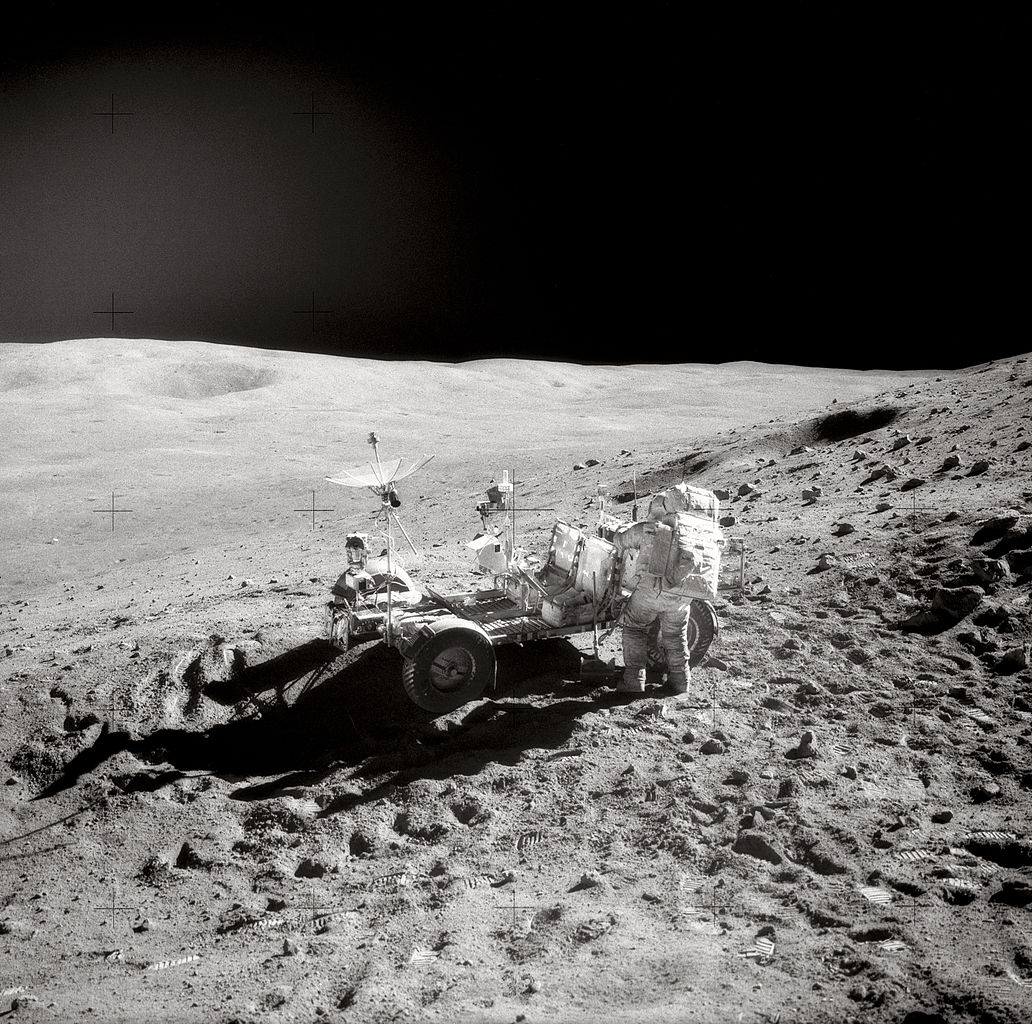
A remote television camera was placed on the surface and captured color images of the Lunar Module Ascent Stage departing the Moon for lunar orbit at 01:25:47 UTC, 24 April 1972. ⁴
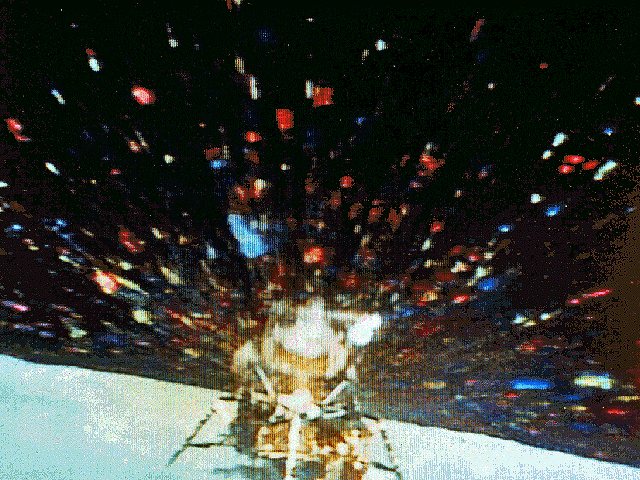
¹ FAI Record File Number 2301. Greatest Mass Landed on a Celestial Body: 8 257,6 kilograms (18,204.9 pounds)
² FAI Record File Number 2303. Duration of Stay on the Surface of a Celestial Body: 71 hours, 02 minutes, 13 seconds
³ FAI Record File Number 17099: Duration Extravehicular Stay on the Surface of Moon or Planet: 39 hours, 47 minutes, 3 seconds [TDiA note: EVA 1, 118:53:38—126:04:40, 7 hours, 11 minutes, 2 seconds. EVA 2, 142:39:35—150:02:44, 7 hours, 23 minutes, 9 seconds. EVA 3, 165:31:28—171:11:31, 5 hours, 40 minutes, 3 seconds. Total of EVAs 1, 2 and 3: 20 hours, 14 minutes, 14 seconds.]
⁴ FAI Record File Number 17098: Greatest Mass Lifted to Lunar or Planetary Orbit from the Lunar or Planetary Surface: 4 965,5 kilograms (10,947.05 pounds)
© 2019, Bryan R. Swopes
